-
 Bitcoin
Bitcoin $81,840.6210
6.04% -
 Ethereum
Ethereum $1,597.9638
8.58% -
 Tether USDt
Tether USDt $0.9994
-0.03% -
 XRP
XRP $2.0026
9.84% -
 BNB
BNB $577.3606
3.57% -
 USDC
USDC $0.9999
-0.02% -
 Solana
Solana $114.7371
7.77% -
 Dogecoin
Dogecoin $0.1562
6.85% -
 TRON
TRON $0.2403
4.67% -
 Cardano
Cardano $0.6240
9.32% -
 UNUS SED LEO
UNUS SED LEO $9.3881
2.70% -
 Chainlink
Chainlink $12.3852
9.23% -
 Avalanche
Avalanche $18.0989
9.18% -
 Toncoin
Toncoin $2.9979
-1.98% -
 Stellar
Stellar $0.2349
5.96% -
 Hedera
Hedera $0.1711
12.93% -
 Shiba Inu
Shiba Inu $0.0...01206
10.22% -
 Sui
Sui $2.1408
8.96% -
 MANTRA
MANTRA $6.7043
7.73% -
 Bitcoin Cash
Bitcoin Cash $297.9565
9.10% -
 Litecoin
Litecoin $74.3475
4.91% -
 Polkadot
Polkadot $3.5400
2.22% -
 Dai
Dai $1.0000
0.00% -
 Bitget Token
Bitget Token $4.2732
4.64% -
 Ethena USDe
Ethena USDe $0.9989
0.02% -
 Hyperliquid
Hyperliquid $13.9883
12.96% -
 Pi
Pi $0.5955
5.14% -
 Monero
Monero $204.2372
4.47% -
 Uniswap
Uniswap $5.1811
7.08% -
 OKB
OKB $53.3943
3.95%
How to check the transaction status of Trust Wallet?
To check your Trust Wallet transaction status, find the TXID in the app, then use a blockchain explorer like Etherscan for ETH or BscScan for BSC to view details.
Apr 01, 2025 at 09:22 pm
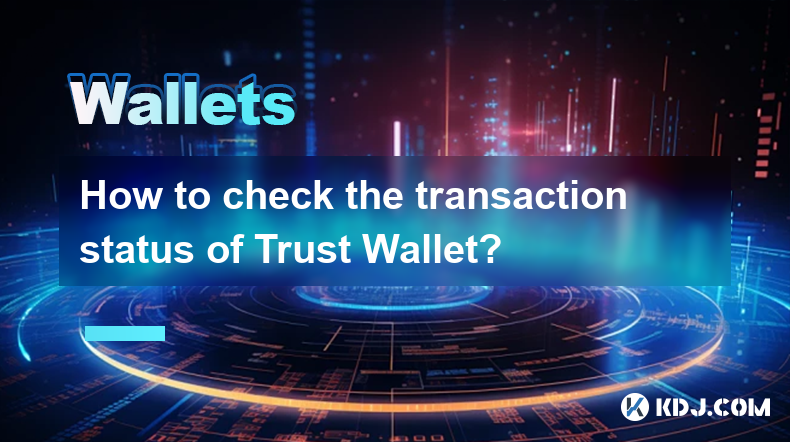
Understanding Trust Wallet Transactions
Trust Wallet, a popular mobile cryptocurrency wallet, handles transactions across various blockchains. Checking the status of your transaction requires understanding which blockchain your transaction is on. Unlike centralized exchanges, Trust Wallet doesn't have a single transaction history page for all coins. Instead, you need to access the relevant blockchain explorer for your specific cryptocurrency. This is because Trust Wallet acts as an interface, connecting you to the underlying blockchain network.
Locating Your Transaction Hash
Before you can check the status, you need the transaction hash (TXID). This is a unique alphanumeric identifier for each transaction. You can find this within the Trust Wallet app itself.
- Open your Trust Wallet app.
- Go to the "History" section for the specific cryptocurrency involved in the transaction.
- Locate the transaction you're interested in. The transaction hash will be displayed, usually as a long string of characters. Copy this transaction hash.
Checking Transaction Status on Different Blockchains
The method for checking your transaction status varies depending on the blockchain. Here are some examples:
Ethereum (ETH) and ERC-20 Tokens: Use a blockchain explorer like Etherscan.io. Paste your transaction hash into the search bar on Etherscan. It will show you the transaction details, including its status (pending, confirmed, failed).
Binance Smart Chain (BSC) and BEP-20 Tokens: Use a blockchain explorer like BscScan.com. The process is identical to using Etherscan; paste your transaction hash into the search bar.
Bitcoin (BTC): Use a blockchain explorer like Blockchain.com or Blockexplorer.com. Again, paste your transaction hash to find the transaction details.
Other Blockchains: Most blockchains have their own dedicated explorers. A quick web search for "[Blockchain Name] explorer" will usually lead you to the right tool. Always double-check the URL to ensure you are using a legitimate explorer.
Interpreting Transaction Status
Once you've accessed the blockchain explorer, you'll see various statuses:
Pending: The transaction is still being processed by the network. This is normal and can take some time, depending on the network congestion.
Confirmed: The transaction has been successfully added to the blockchain and is irreversible. The number of confirmations varies by blockchain; more confirmations generally mean greater security.
Failed: The transaction failed to process. This can be due to various reasons, such as insufficient funds, incorrect recipient address, or high gas fees (for Ethereum and similar blockchains). Review the transaction details on the explorer for more information.
Replaced: This indicates that a newer transaction with a higher gas fee has replaced an older, pending transaction. This is common on congested networks like Ethereum.
Troubleshooting Transaction Issues
If your transaction is pending for an unusually long time or has failed, here's what you can do:
Check Network Congestion: High network congestion can significantly delay transaction processing. Check the status of the network on the relevant blockchain explorer.
Verify Recipient Address: Double-check that you entered the correct recipient address. Sending cryptocurrency to the wrong address is irreversible.
Gas Fees (Ethereum and similar): Ensure you set sufficient gas fees when sending transactions on Ethereum or similar blockchains. Low gas fees can lead to slow processing or failure.
Contact Support: If you're still experiencing issues, contact Trust Wallet support for assistance.
Understanding Gas Fees
Gas fees are transaction fees paid to miners or validators on certain blockchains, like Ethereum, to process transactions. Higher gas fees generally lead to faster transaction processing. Trust Wallet will usually display an estimated gas fee before you confirm a transaction. You can adjust the gas fee in some cases, but be aware that lower fees may result in longer processing times or failure.
Security Considerations
Only use official blockchain explorers: Be wary of phishing websites that mimic legitimate blockchain explorers. Always double-check the URL before entering your transaction hash.
Never share your private keys or seed phrase: These are crucial for accessing your cryptocurrency. Losing them means losing your funds.
Keep your Trust Wallet app updated: Updates often include security patches and improvements.
Enable two-factor authentication (2FA): This adds an extra layer of security to your account.
Frequently Asked Questions
Q: My transaction is pending for a long time. What should I do?
A: Check the network congestion on the relevant blockchain explorer. If congestion is high, you may need to wait. If it's been unusually long, verify the recipient address and contact Trust Wallet support.
Q: My transaction failed. What are the possible reasons?
A: Possible reasons include insufficient funds, incorrect recipient address, or insufficient gas fees (for Ethereum-based transactions). Check the transaction details on the blockchain explorer for more specific information.
Q: How do I find my transaction hash?
A: Open your Trust Wallet app, go to the transaction history for the relevant cryptocurrency, and locate the transaction. The transaction hash will be displayed.
Q: What is a blockchain explorer?
A: A blockchain explorer is a website that allows you to view transaction details on a specific blockchain network. Each blockchain usually has its own dedicated explorer.
Q: What are gas fees?
A: Gas fees are transaction fees paid to miners or validators on certain blockchains to process transactions. They are not applicable to all blockchains.
Q: Is it safe to use Trust Wallet?
A: Trust Wallet is a widely used and generally considered secure wallet, but like any digital wallet, it's crucial to practice good security habits, such as using a strong password, enabling 2FA, and only using official websites and apps.
Disclaimer:info@kdj.com
The information provided is not trading advice. kdj.com does not assume any responsibility for any investments made based on the information provided in this article. Cryptocurrencies are highly volatile and it is highly recommended that you invest with caution after thorough research!
If you believe that the content used on this website infringes your copyright, please contact us immediately (info@kdj.com) and we will delete it promptly.
- IRS Targets DeFi Platforms with New Reporting Rules
- 2025-04-10 17:35:13
- Byte Federal Suffers a Major Data Breach Exposing Data of Up to 58,000 Customers
- 2025-04-10 17:35:13
- EV3 Invests in Dtravel to Expand the DePIN Ecosystem
- 2025-04-10 17:30:13
- Bitcoin (BTC) Market Shows Mild Rebound, BTC Price Fluctuating in a Narrow Range
- 2025-04-10 17:30:13
- Bitcoin (BTC) and Ether (ETH) Exchange-Traded Funds (ETFs) Saw Outflows Wednesday Despite Cryptocurrencies' Price Surges
- 2025-04-10 17:25:13
- Standard Chartered Makes an Epic XRP Price Prediction
- 2025-04-10 17:25:13
Related knowledge
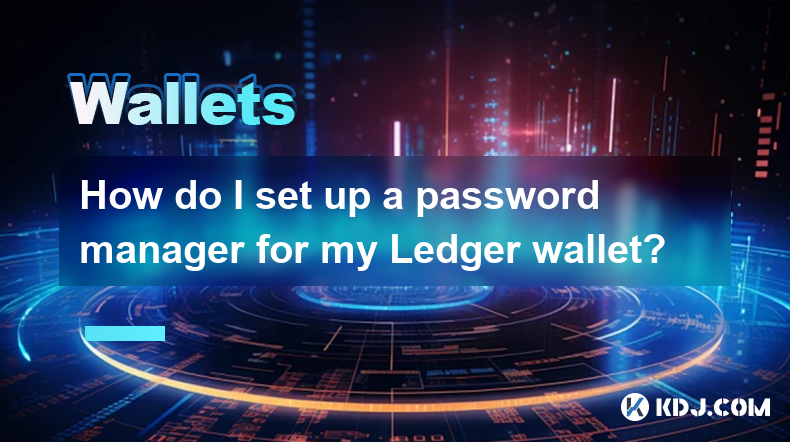
How do I set up a password manager for my Ledger wallet?
Apr 10,2025 at 11:50am
Setting up a password manager for your Ledger wallet is an essential step in enhancing the security of your cryptocurrency assets. A password manager helps you generate, retrieve, and keep track of complex passwords, ensuring that your Ledger wallet remains secure. In this article, we will guide you through the process of setting up a password manager s...
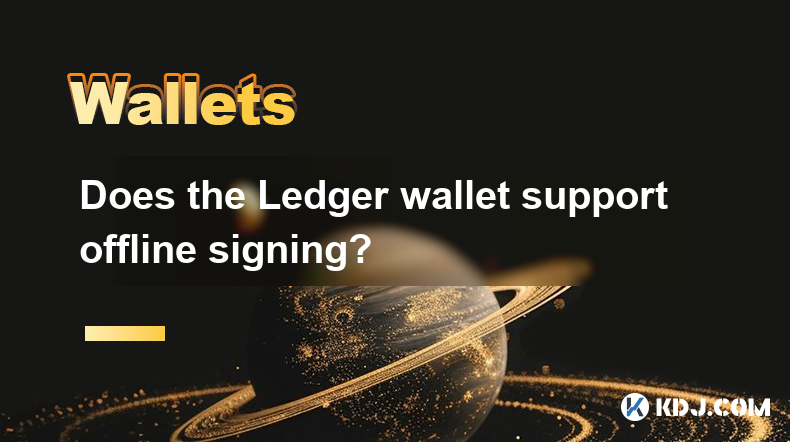
Does the Ledger wallet support offline signing?
Apr 09,2025 at 04:49am
Introduction to Ledger Wallet and Offline SigningThe Ledger wallet is a popular hardware wallet used by cryptocurrency enthusiasts to securely store their digital assets. One of the key features that users often inquire about is offline signing. Offline signing, also known as cold signing, is a security measure that allows users to sign transactions wit...
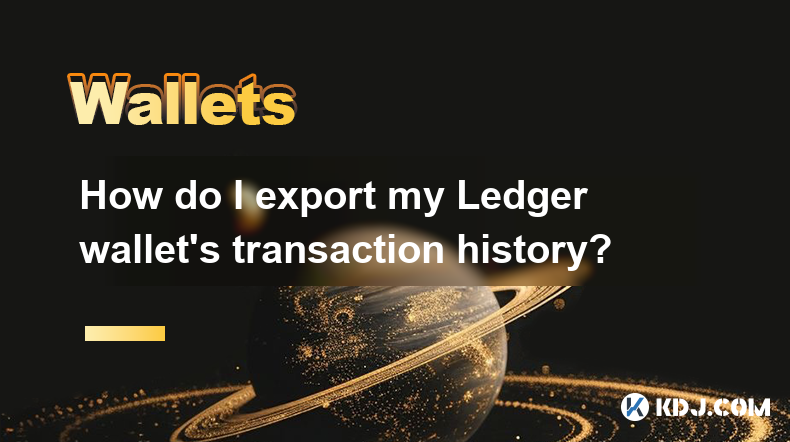
How do I export my Ledger wallet's transaction history?
Apr 10,2025 at 10:15am
Exporting your Ledger wallet's transaction history can be a crucial step for managing your cryptocurrency assets effectively. Whether you need this data for tax purposes, portfolio tracking, or simply for record-keeping, understanding how to access and export this information is essential. In this article, we will guide you through the process of export...
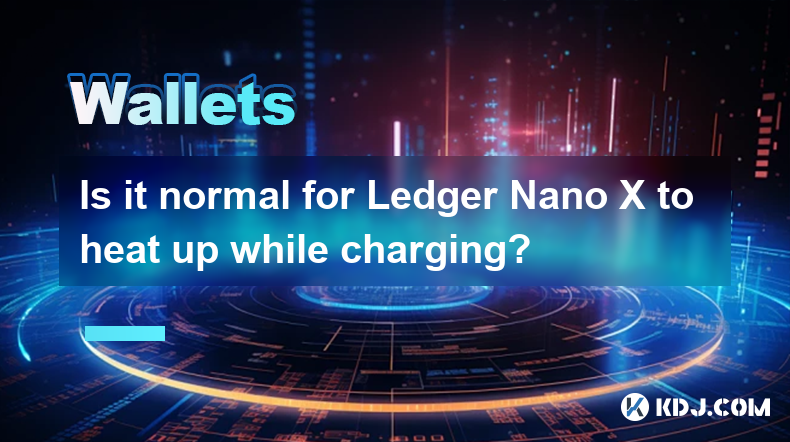
Is it normal for Ledger Nano X to heat up while charging?
Apr 09,2025 at 04:01pm
Is it normal for Ledger Nano X to heat up while charging? When using a hardware wallet like the Ledger Nano X, it's common for users to have concerns about the device's behavior, especially when it comes to heat generation during charging. This article will delve into the reasons behind the Ledger Nano X heating up while charging, whether it's normal, a...
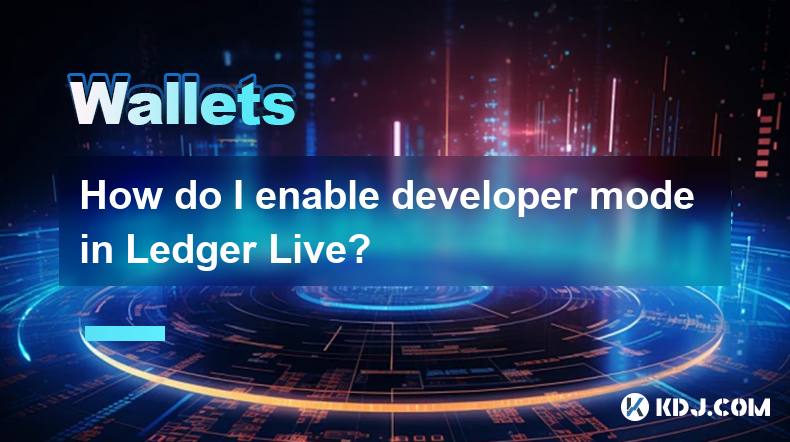
How do I enable developer mode in Ledger Live?
Apr 10,2025 at 05:49am
Enabling developer mode in Ledger Live can be a useful feature for advanced users who want to access experimental features or test new functionalities. This guide will walk you through the process of enabling developer mode in Ledger Live, ensuring you understand each step thoroughly. Understanding Developer ModeDeveloper mode in Ledger Live allows user...
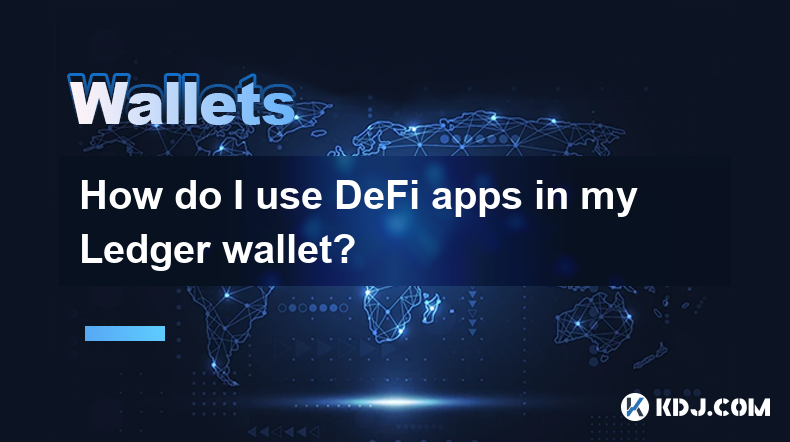
How do I use DeFi apps in my Ledger wallet?
Apr 10,2025 at 11:28am
Using DeFi apps with your Ledger wallet allows you to interact with decentralized finance platforms securely. This guide will walk you through the process of setting up and using DeFi apps with your Ledger device, ensuring your assets remain safe while you explore the world of DeFi. Setting Up Your Ledger Wallet for DeFiBefore you can use DeFi apps with...

How do I set up a password manager for my Ledger wallet?
Apr 10,2025 at 11:50am
Setting up a password manager for your Ledger wallet is an essential step in enhancing the security of your cryptocurrency assets. A password manager helps you generate, retrieve, and keep track of complex passwords, ensuring that your Ledger wallet remains secure. In this article, we will guide you through the process of setting up a password manager s...

Does the Ledger wallet support offline signing?
Apr 09,2025 at 04:49am
Introduction to Ledger Wallet and Offline SigningThe Ledger wallet is a popular hardware wallet used by cryptocurrency enthusiasts to securely store their digital assets. One of the key features that users often inquire about is offline signing. Offline signing, also known as cold signing, is a security measure that allows users to sign transactions wit...

How do I export my Ledger wallet's transaction history?
Apr 10,2025 at 10:15am
Exporting your Ledger wallet's transaction history can be a crucial step for managing your cryptocurrency assets effectively. Whether you need this data for tax purposes, portfolio tracking, or simply for record-keeping, understanding how to access and export this information is essential. In this article, we will guide you through the process of export...

Is it normal for Ledger Nano X to heat up while charging?
Apr 09,2025 at 04:01pm
Is it normal for Ledger Nano X to heat up while charging? When using a hardware wallet like the Ledger Nano X, it's common for users to have concerns about the device's behavior, especially when it comes to heat generation during charging. This article will delve into the reasons behind the Ledger Nano X heating up while charging, whether it's normal, a...

How do I enable developer mode in Ledger Live?
Apr 10,2025 at 05:49am
Enabling developer mode in Ledger Live can be a useful feature for advanced users who want to access experimental features or test new functionalities. This guide will walk you through the process of enabling developer mode in Ledger Live, ensuring you understand each step thoroughly. Understanding Developer ModeDeveloper mode in Ledger Live allows user...

How do I use DeFi apps in my Ledger wallet?
Apr 10,2025 at 11:28am
Using DeFi apps with your Ledger wallet allows you to interact with decentralized finance platforms securely. This guide will walk you through the process of setting up and using DeFi apps with your Ledger device, ensuring your assets remain safe while you explore the world of DeFi. Setting Up Your Ledger Wallet for DeFiBefore you can use DeFi apps with...
See all articles





















































































